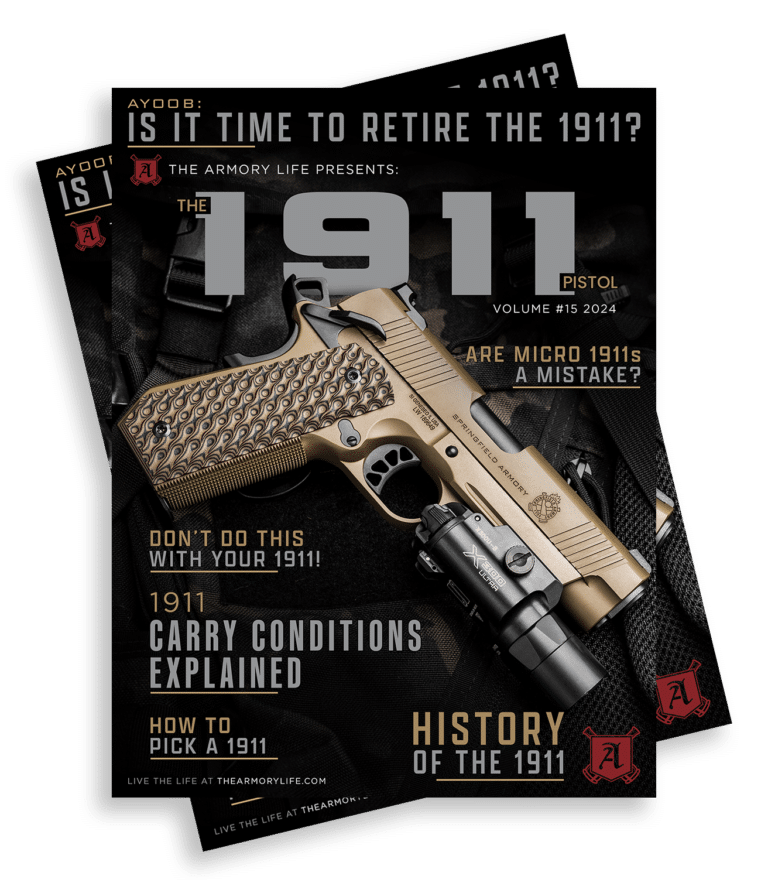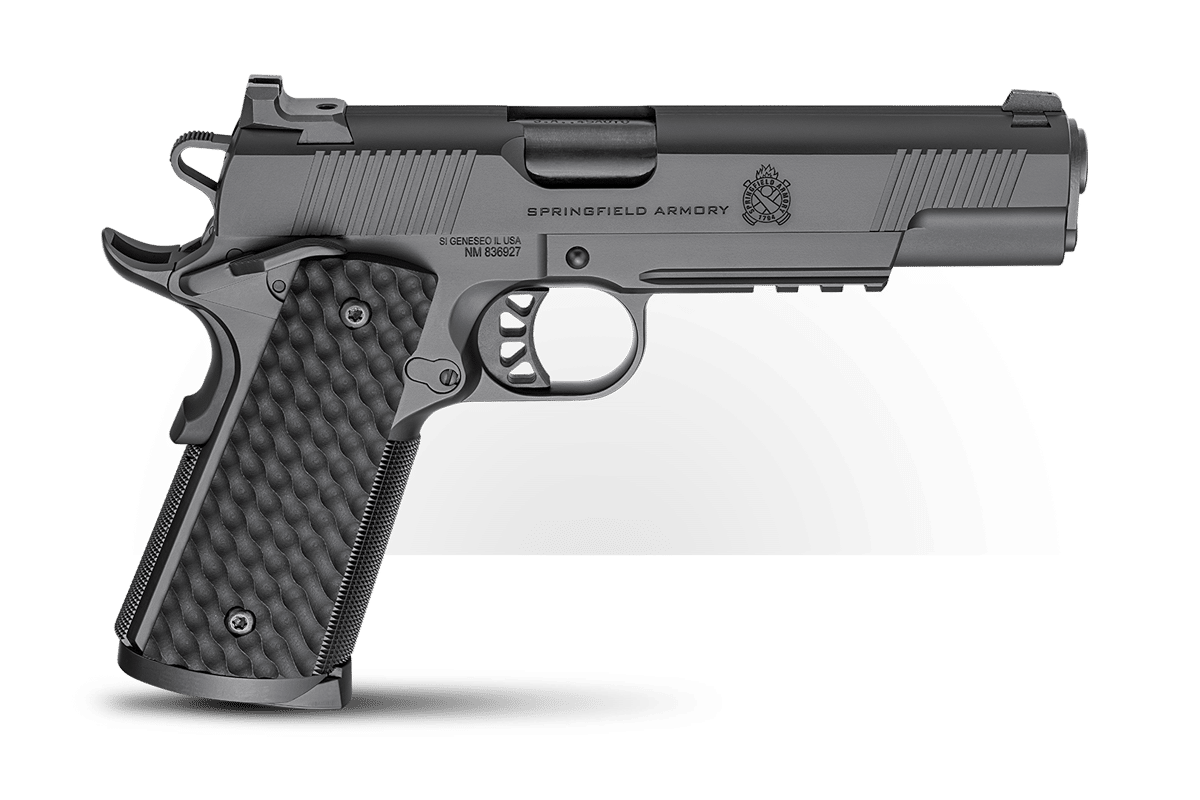Ayoob: Is It Time to Retire the 1911?
June 23rd, 2022
7 minute read
As I write this, a cocked and locked 1911 .45 rides in a leather holster at my hip. To read some of the gun magazines and gun forums these days, this would mark me as a boomer who can’t grasp the advantages of smaller, lighter polymer 9mm pistols that hold more cartridges. The question is, is the 1911 an ancient artifact that needs to ride off into the sunset?
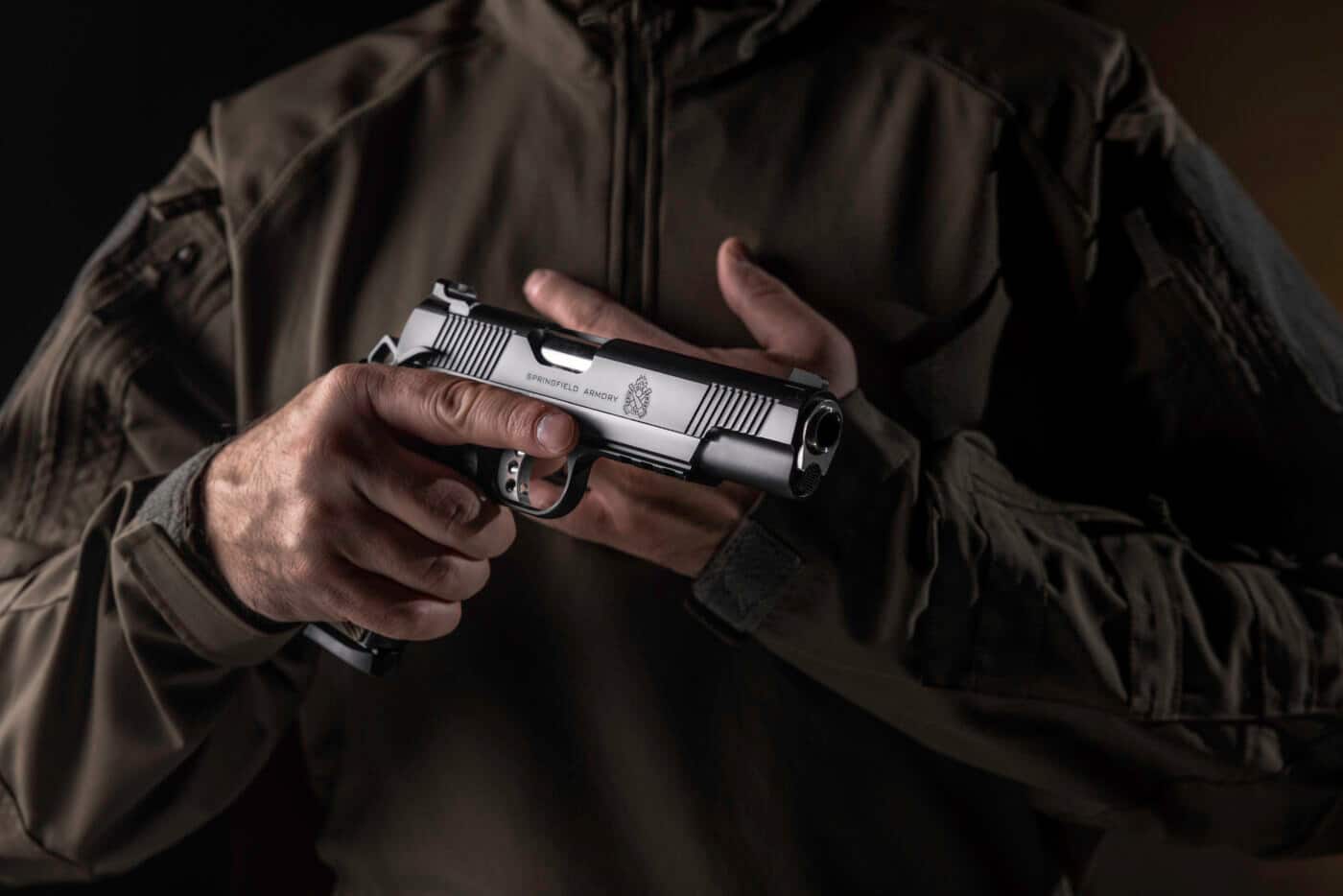
If you ask me, there are many factors to analyze on this pistol to answer that question. The 1911 is clearly an iconic pistol, and both it and the .45 ACP chambering are certainly still popular. Let’s take a look at the pistol and see if the 1911 still has what it takes to compete today.
Gripping Questions
When the 1911 was first developed, people (and their hands) were generally much smaller. However, the design has proven itself to be quite adaptable to a wide range of hand sizes. Short, medium, and long triggers can be chosen from the range of 1911s in the dealer’s showcase, or retrofitted to existing 1911s.
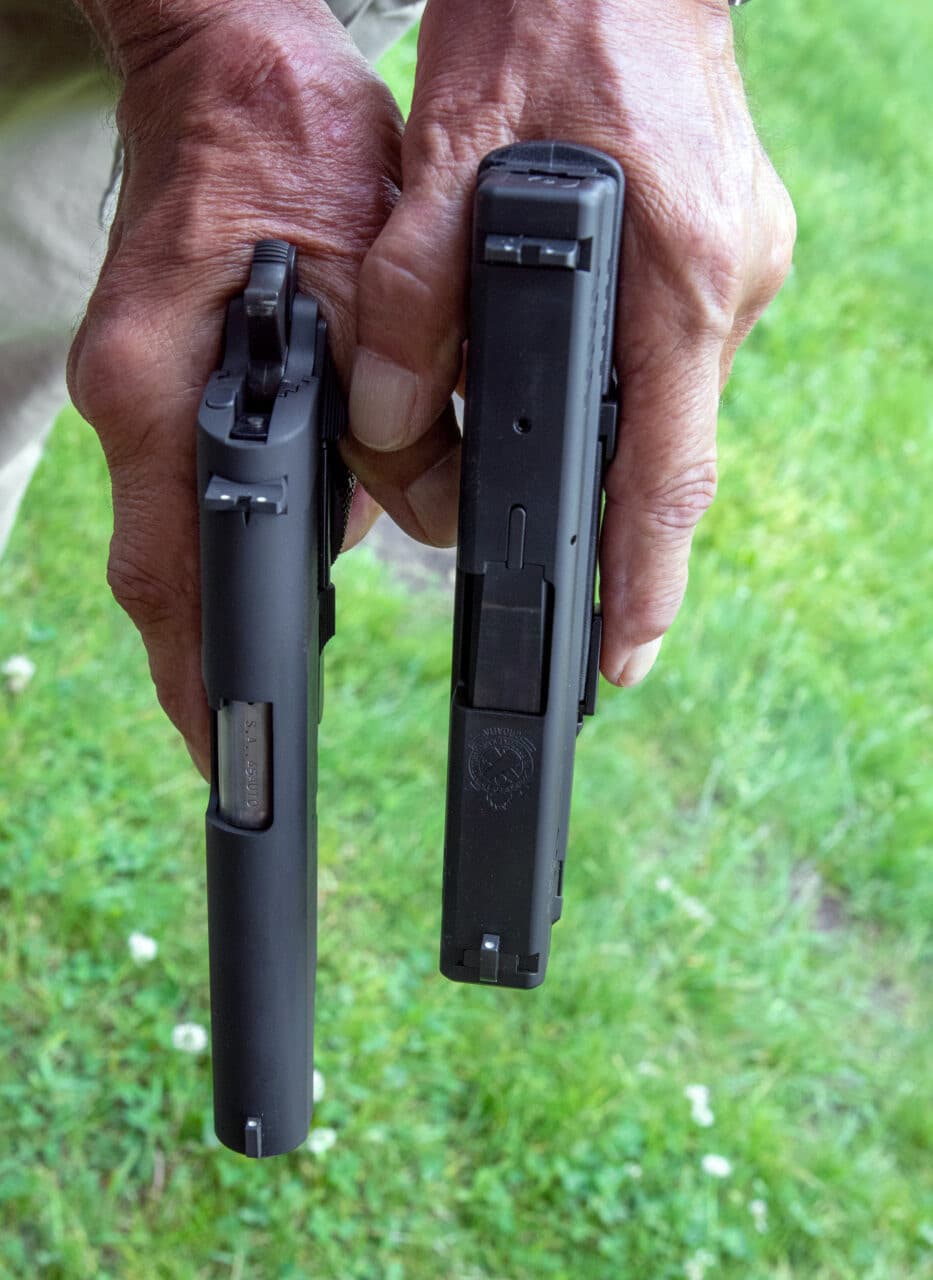
Shortly after World War I, veterans were polled on how their issued weapons had worked. One of the complaints about the 1911 was that many found the original trigger was too long to reach for optimum trigger finger placement. This resulted in the much shorter trigger (and the niches in the frame behind the trigger). These changes (along with several others), would become distinguishing characteristics of what would become the 1911-A1.
Bearing in mind that the average adult male of the period was shorter than today with proportionally smaller hands, most of today’s adult male shooters favor longer triggers than the 1911-A1 style — unless they prefer to press the trigger with the distal joint of the index finger instead of the pad. Also, the short trigger is ideal for petite females and smaller-statured males with proportionally shorter fingers.
Not a Thin Reed
The 1911 has a very slim profile, particularly for such a robust pistol. When it comes to .45 pistols, most of the polymer-framed, striker-fired pistols in that chambering (and most double-action .45 autos) are distinctly thicker. As an accompanying photo shows, even a full-size 1911 rides very tight to the body. With an inside the waistband holster, the 1911’s slimness adds greatly to “comfort factor” during all day/every day carry.
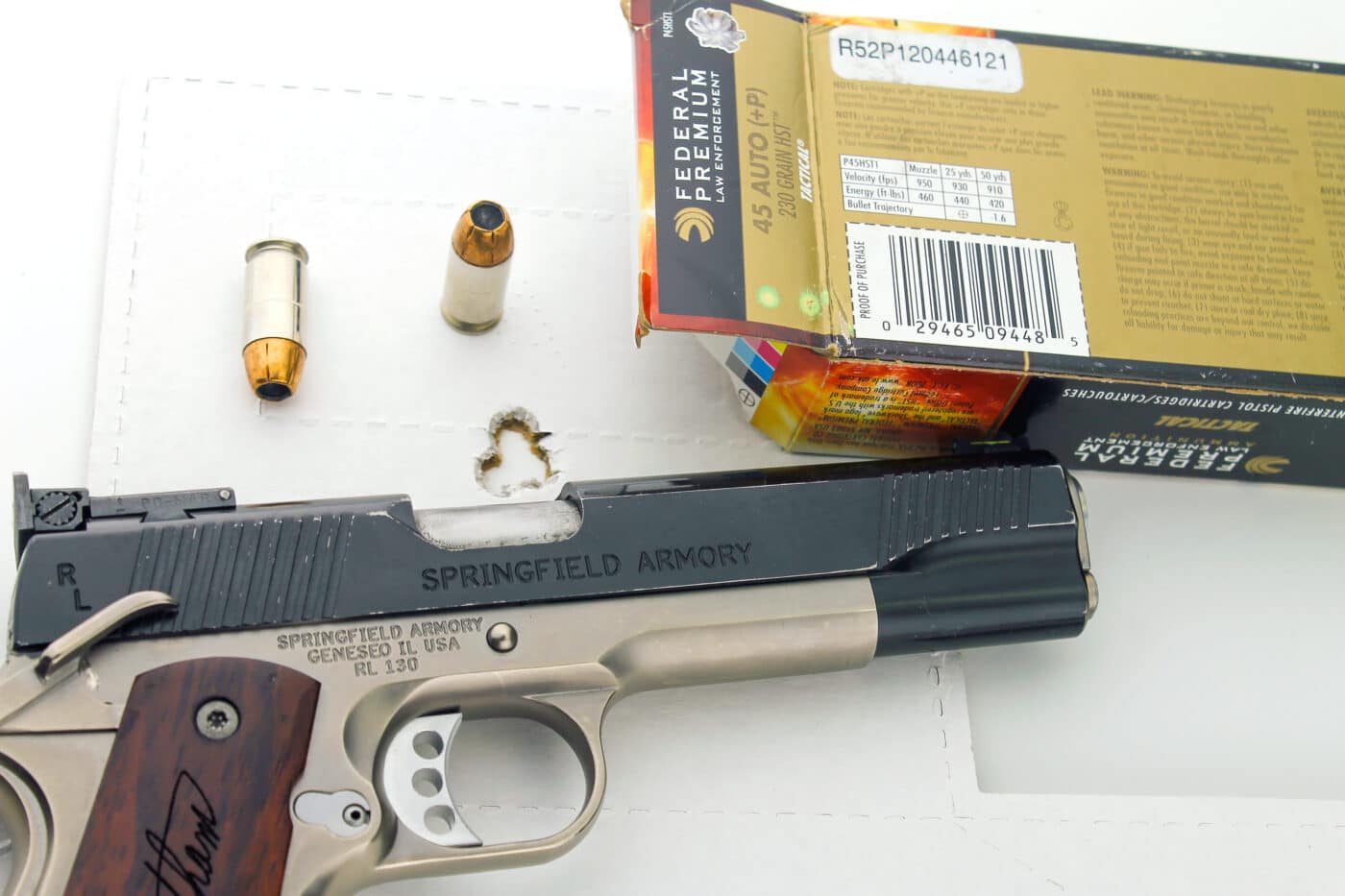
Yes, an all-steel 1911 is heavy. However, we’ve had lighter aluminum frame models since about 1950, and the smaller ones of course are even lighter. Spare single-stack magazines for 1911s, which take some of the worry out of capacity issues, are also wonderfully thin and easy to wear in discreet concealment.
The slim grip also ensures ease of gripping the pistol, providing enviable controllability. This is a biggie in the 1911’s popularity. So long as you have a beavertail grip safety that won’t bite the web of your hand, you’ll appreciate the 1911’s low bore axis, which gives more leverage to the shooter and reduces muzzle rise compared to the same ammunition in most other .45 ACP pistols.
Simple Is …
The 1911 pistol’s short, easy trigger pull is a cardinal selling point. The sliding (instead of pivoting) trigger seems less prone to abuse by frisky trigger fingers. The reset for the next shot is also pretty quick. There are reasons why the 1911 owns the .45 caliber events at the NRA’s National (bullseye) pistol championship, and almost totally dominates the centerfire events, where rounds as soft-shooting as .32 caliber are allowed. The 1911 still pretty much rules practical pistol competition, from the United States Practical Shooting Association matches to the Pin Shoot in Michigan every year.
Potent Power
Power level is the raison d’etre of the .45 ACP cartridge, the first and still most prevalent chambering of the 1911. Any gun enthusiast can share the legend of the .38 revolver’s failure to stop fanatical Moro warriors in the Philippines, leading to demand for a .45 caliber cartridge in a semi-automatic pistol.
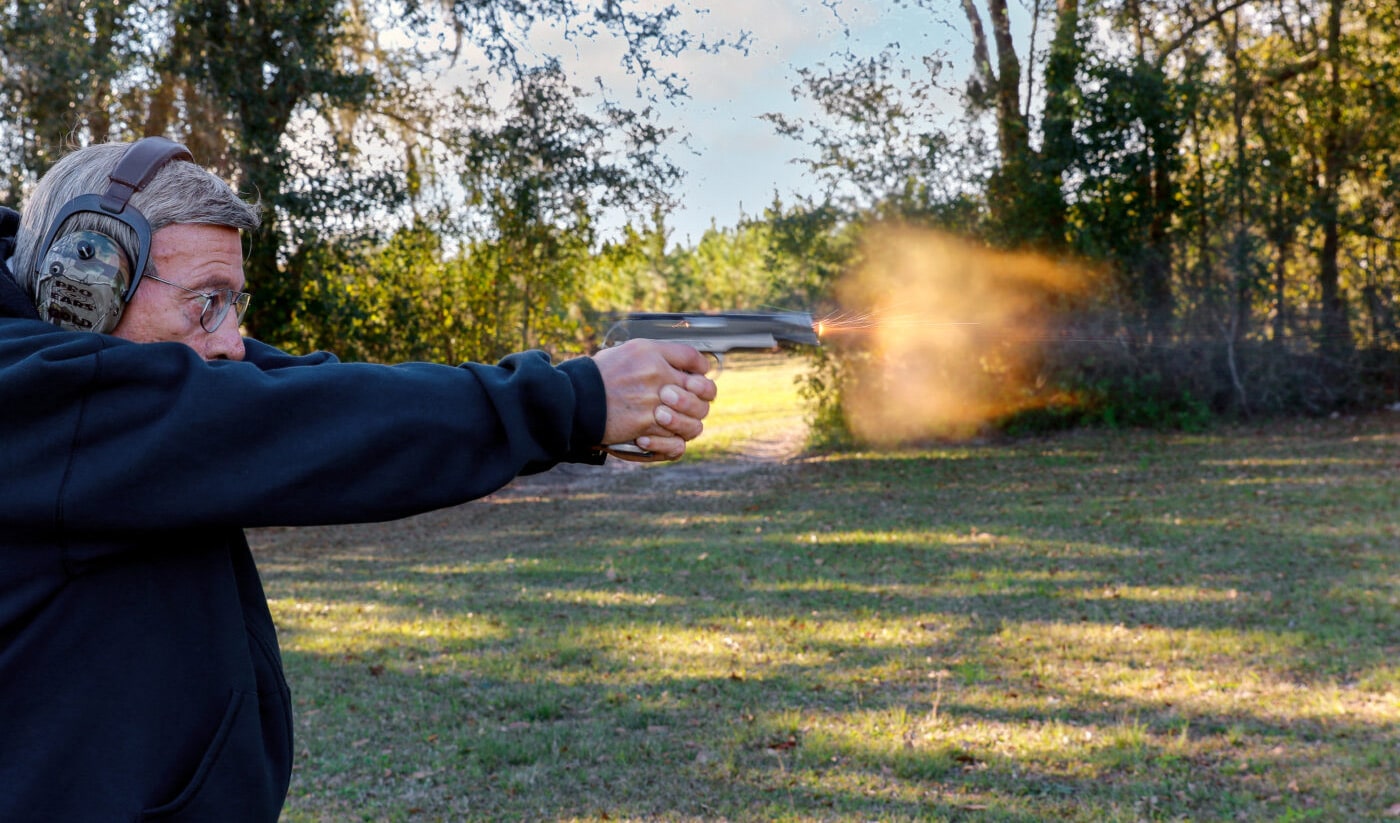
The wide, heavy bullet may not give the 19 one-shot stops out of 20 shootings that one of its greatest fans promised back in the day, but no one disputes that as carry/duty/self-defense pistols go the .45 is at the upper levels of potency.
We mentioned earlier that many champion shooters use .45 1911s in the centerfire events of bullseye shooting. That’s not because they’re too cheap to buy a .32, .38 or 9mm. The fact is, the wider diameter of the .45 bullet will often cut a scoring ring on the target and add a point to the score that would have missed that extra point. It makes sense that when passing through a living creature, that slightly larger diameter can bring a faster end to life-threatening encounters.
Safe Choices
The 1911’s thumb safety is more a feature than a bug. Custom and practice have made cocked and locked (a/k/a “Condition One”) mandatory with the 1911 pistol. While some people fear they might be too stupid or panicky to remember to thumb their safety off when they need to draw and fire rapidly, that just doesn’t seem to happen except with dilettante users.
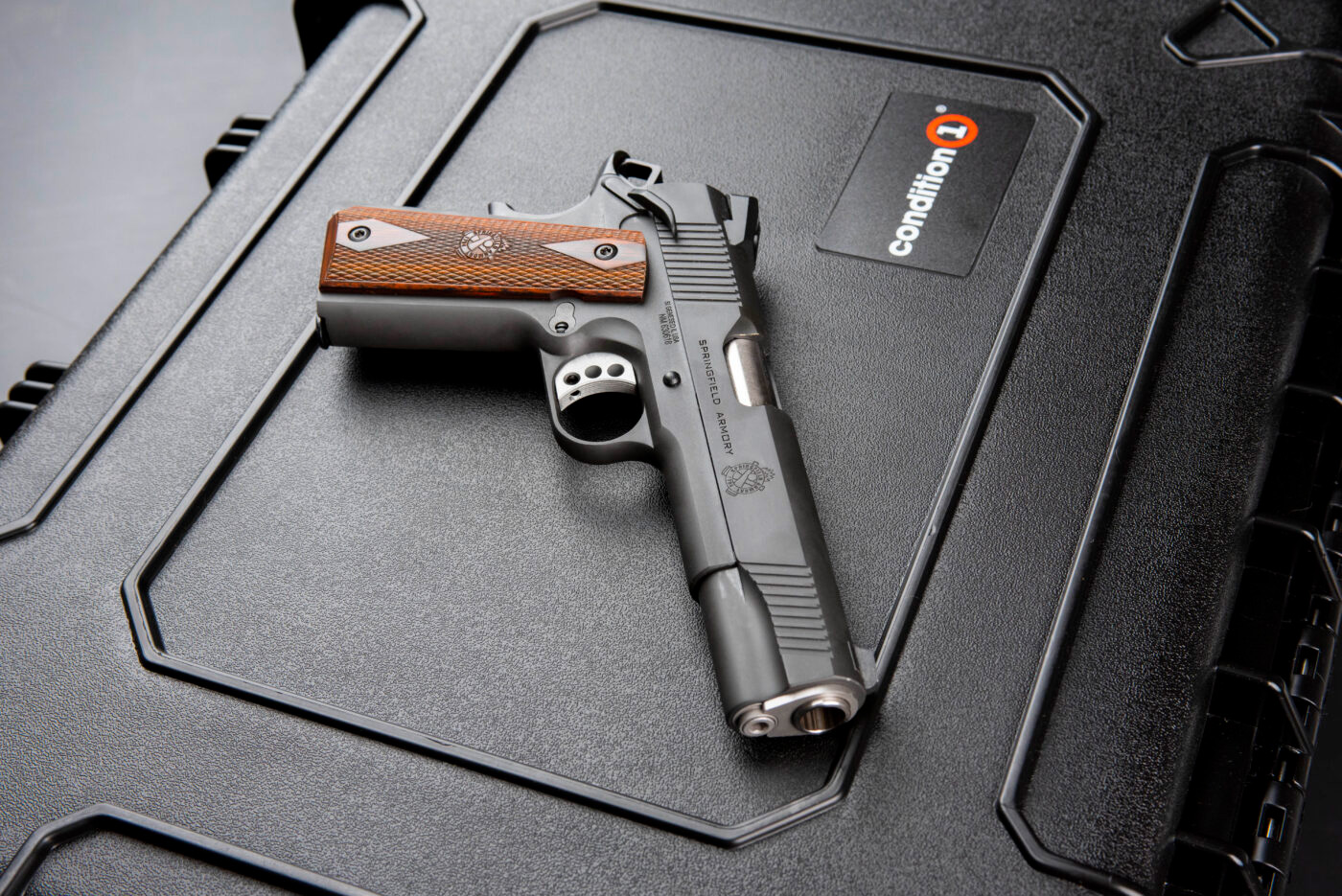
On the flip side, if the “bad guy” gets the gun away from the “good guy”, we’ve seen case after case in which the would-be murderer failed because he “couldn’t find the switch that turned on” the gun. This proprietary nature to the user feature is a proven lifesaver.
Familiar Feel
Habituation gets a vote. While it’s not true for every user, obviously, there are generations of Americans whose parents — or whose governments! — taught them to use the pistol once known as “the GI .45 auto.” Not having to re-invent the wheel with a new manual of arms after each international conflict, soldiers, sailors and Marines came home habituated to the 1911, and bought their own for personal and home defense.
We also had more than one generation influenced by the writings of Col. Jeff Cooper, the high priest of the 1911 .45, and many more experts who had made the same choice as the colonel. Once we’ve “imprinted” on a certain piece of equipment, it becomes not only a logical objective choice but a personal and subjective one to stay with it.
Additionally, that “iconic” thing is real. The 1911 .45 pistol, historians say, was the first firearm to ever pass a U.S. military ordnance test 100%. Many of us have put so many thousands of .45 ACP rounds through them that we’ve come to trust their reliability and overall performance. This creates confidence, and confidence intertwines inextricably with competence.
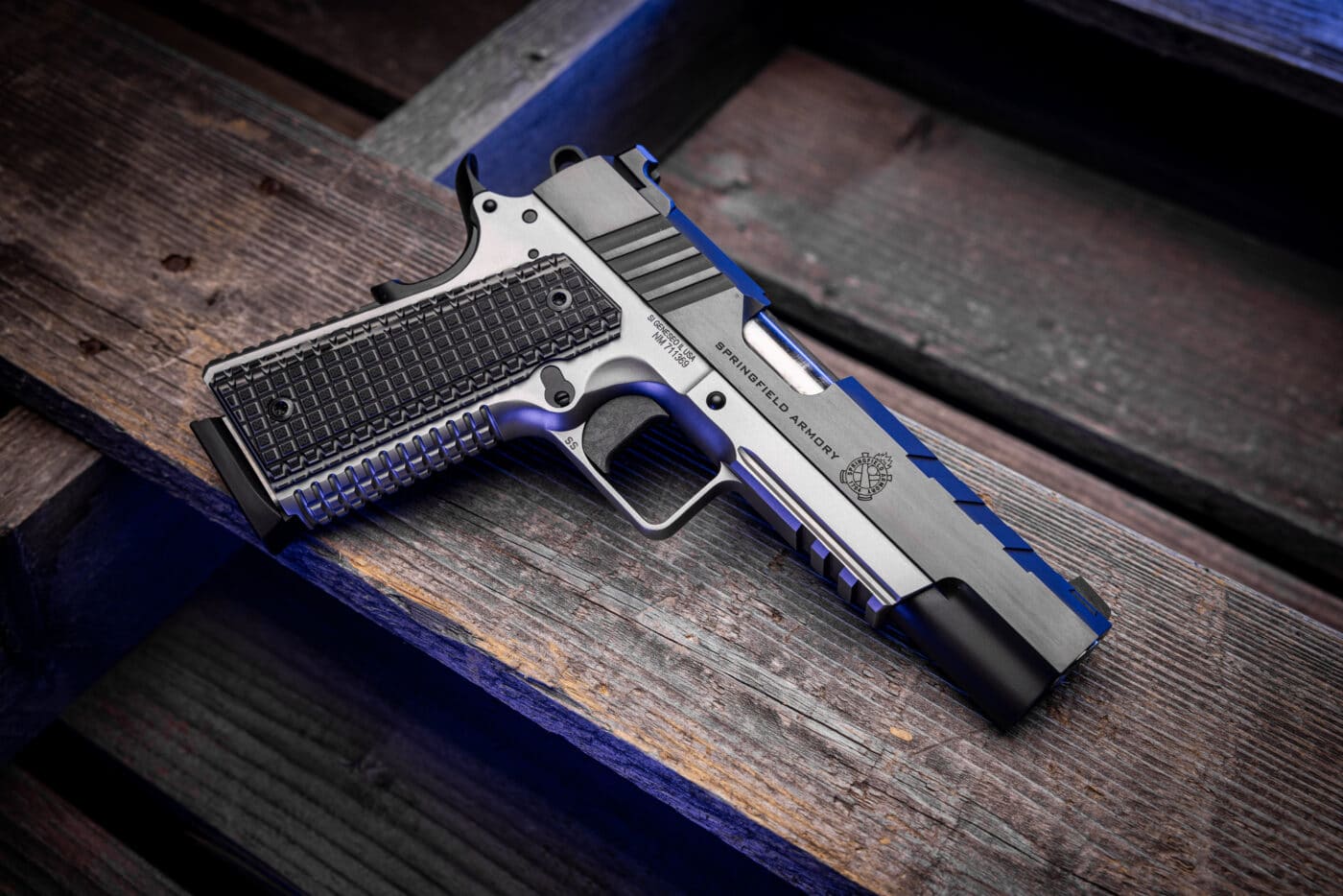
Now, some people have not had this same good experience. As a firearms instructor for half a century now, I’ve noticed that when a 1911 .45 malfunctions, the cause can be isolated and remediated. G.I. surplus magazines (or cheap commercial clones, thereof) were designed to work only with round-nose full metal jacket ball and can cause malfunctions with wide-mouth hollow points or semi-wadcutter bullets; proper magazines in a gun “throated” (by its manufacturer at birth, or a gunsmith or armorer later) cure the problem.
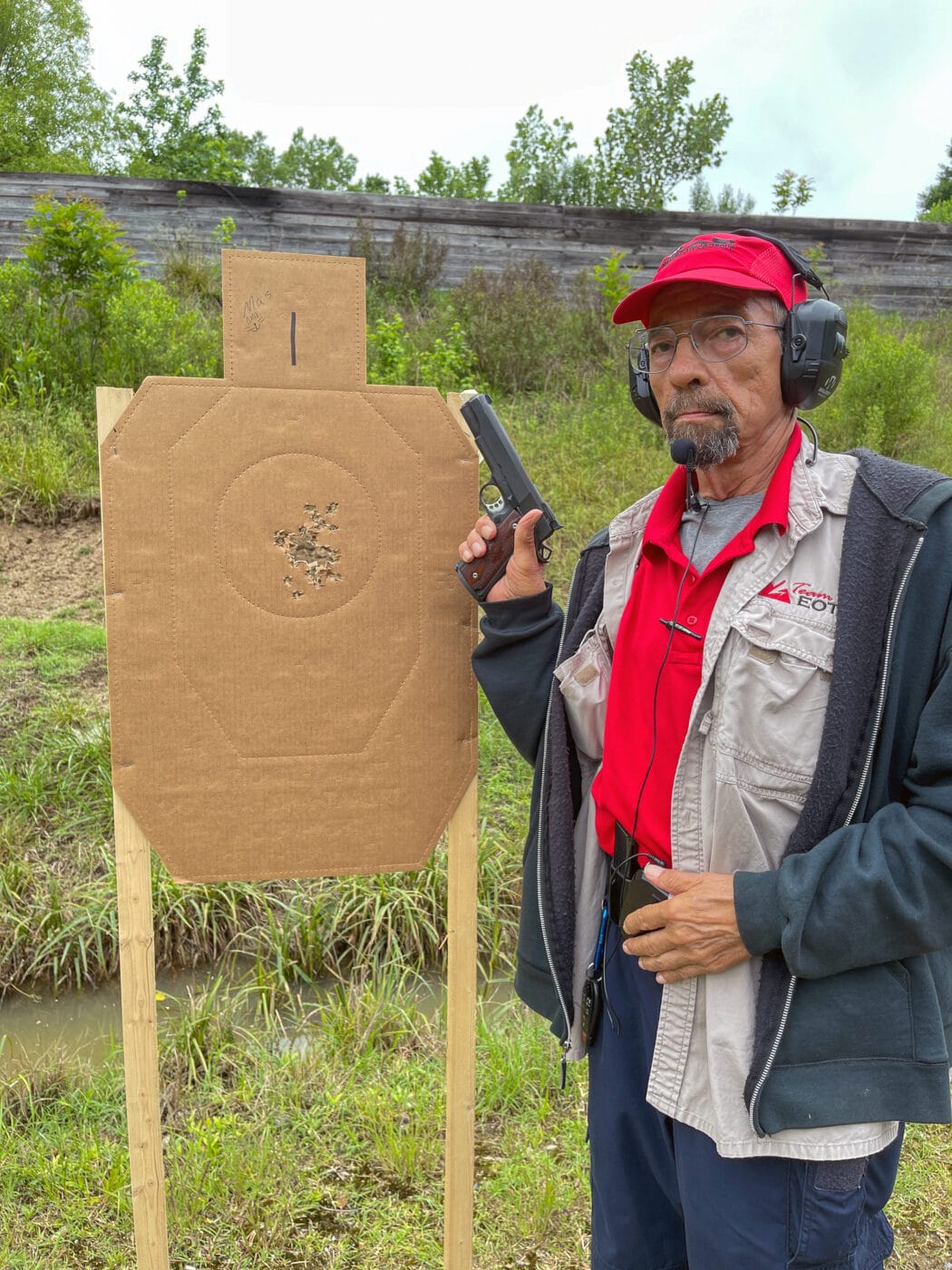
Recoil springs that are worn out or not rated for the power level of the ammo being used are another problem, easily diagnosed and corrected. And, as with any semi-automatic pistol, malfunctions caused by “limp-wrist” hold are easy to diagnose, and to fix with a solid grasp and a locked wrist.
Conclusion
Some of these factors come together better for some users than for others. One reason the old man writing this is so confident with the 1911 .45 is that he grew up influenced by Col. Cooper, started shooting .45 1911’s at age 12, and has had good luck with them for more than 60 years.
But, if you look at the big picture and all the benefits and features we have discussed here, I think it helps to explain why some of us still cling to a pistol that was ahead of its time when introduced in the year 1911 and remains relevant for its intended purposes even now.
Editor’s Note: Be sure to check out The Armory Life Forum, where you can comment about our daily articles, as well as just talk guns and gear. Click the “Go To Forum Thread” link below to jump in!
Join the Discussion
Featured in this article
Continue Reading
Did you enjoy this article?

 1114
1114




